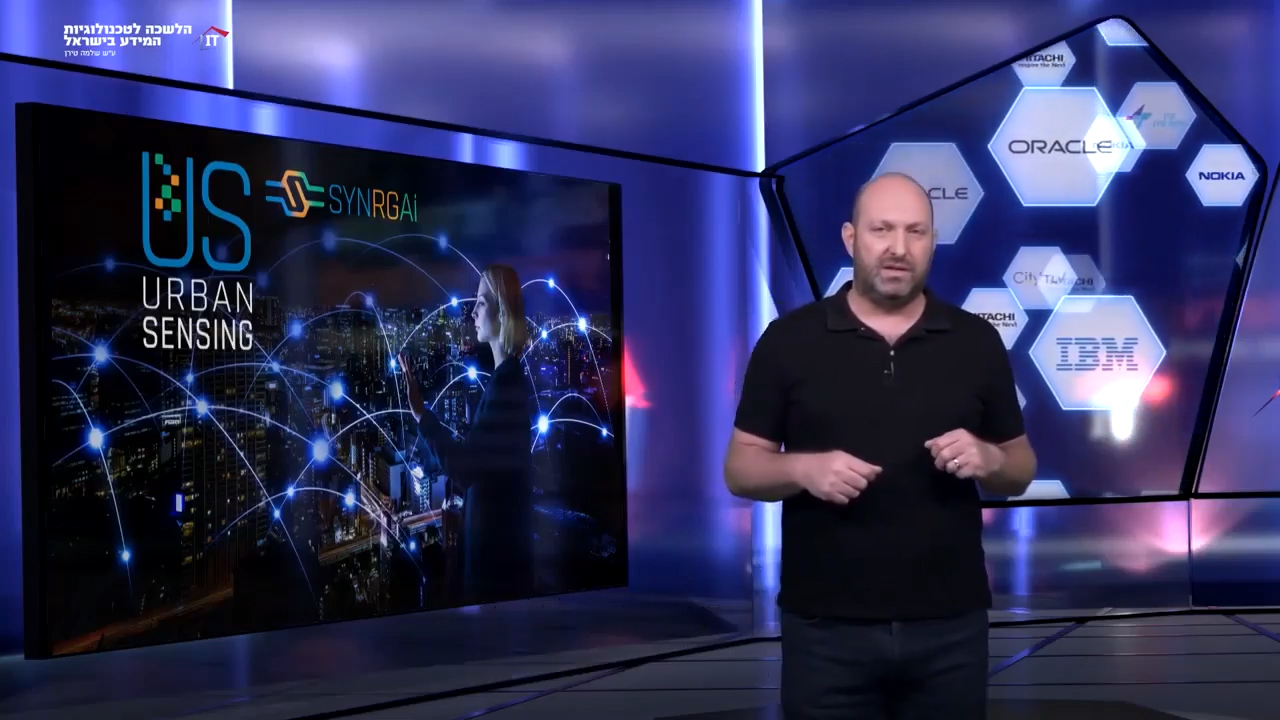Co-founders of SYN-RG-Ai, Mr. Avi Cohen and Mr. Ronny Numa, joined the panel of Israel’s leading experts in information technology innovation at this year’s Israel IT summit.
Despite the challenges caused by the pandemic, this year’s annual conference of the Israel Information Technology Bureau was held (virtually) in early November, broadcasted from Tel-Aviv.
In the select group of panelists invited to lecture in the segment of Homeland Security & Public Safety, our company leaders took the opportunity to share invaluable experience and knowledge they acquired managing the Covid-19 crisis in Israel.
Major-General (ret.) and co-founder Ronny Numa begins the lecture by framing the importance of synergy between People, Methodology and Technology in the crisis management process. This concept, further explained by Colonel (ret.) and co-founder Avi Cohen, is what makes SYN-RG-Ai’s approach innovative and successful in the context of a public health emergency.
“Ultimately the huge contribution of technology to our capacity is the acceleration of the pace at which the information is gathered and processed, and how this data can provide a deeper understanding of the situation for optimal decision-making — but also how it allows us to implement these decisions and measure their impact and implications. So we can quickly learn, improve, and include the ability to predict the outcomes of different alternatives”, said Numa. “I’m not saying this can be done without mistakes — and it’s impossible to manage an uncertain crisis without making mistakes — but our ability to learn from our mistakes quickly and adjust our solutions, gives us, I believe, the possibility to march Israel and the entire world towards a future that enables dealing with crises at a much lower cost than what we have been accustomed to”.
“Regarding our ability to gather information using different types of sensors — we start with the most developed sensor, which is the human being.”
In the second lecture, Cohen takes a deeper dive into the subject, sharing our field-proven approach to overcoming the unique challenges of performing digital transformation and crisis management in cities which are not equipped with the necessary infrastructure.
“If you arrive and everything is already connected, there’s no panic and no transformation required.” However, this is not the case in many ultra-othodox communities such as Bnei Brak.
“First you need to meet the people, talk with the people, see what they have and what they are capable of […] you have to connect with them and work with them in synergy — You can’t dictate to them [or say] ‘Here’s technology, now use it’.”
“When you want to manage a crisis you need to harness speed and connections. Think of ‘connections’ as a triangle which cannot exist if one of its three vertices is missing, and therefore cannot enable transformation when transposed as a crisis management platform. This connectivity triangle is composed of three elements: First People, secondly Processes, and thirdly Technology.”
“Technology is not the essence or the semblance of everything — It’s a tool. Technology should adapt to the nature of the People and not the other way around, because not every technology — for as good and as intelligent as it may be — is suitable for everyone. So to connect People and Technology, the medium vertex of the triangle is Processes (or Methodology).”
Cohen then describes the challenges that led to the development of the Urban Sensing platform. “The first person you encounter [in the room] in the chief information officer, he has many systems. And you ask him ‘Can you show me a situation report?’, but he can’t do that because there’s a great deal of information of different types constantly being gathered from different places.”
It was crucial to create a platform that is able to sort and manage data, and able to render visually augmented, live reports which can measure specific factors that are most relevant to the mission. This was the early beginnings of the Urban Sensing platform.
“The choice I made in Bnei Brak was to put together a platform which was unlike any existing system, because it was like hovercrafting to connect to all types of existing information in a very organized system capable of flattening out the data […] First I built the sea of data, after which everything in it can be structured. It doesn’t matter if you do it manually, by phone, SMS, IVR, CRM, governmental information systems, banking systems, social security, the Tax Authority — we connect all sources in the biggest operation system there is to build an information pool that can see all data. And that’s when the conversation can begin, between People, Methodology, and Technology. And now this conversation is very dynamic.”
We invite you to watch the entire lecture for more insight and valuable lessons shared. In the meantime, our co-founders are working around the clock to implement crisis management strategies and technology to help Israel and other nations overcome this global threat.

